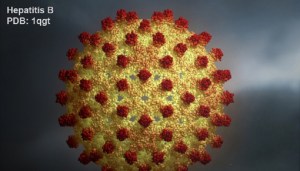Adeno-Associated virus

Adeno-Associated virus (AAV) capsid (3D data 2qa0 from http://www.rcsb.org). The single stranded DNA genome inside the capsid is not visible here. The virus is a small, replication-defective, nonenveloped virus. AAV infects humans and some other primates.AAV is not currently known to cause any disease and this lack of pathogenicity has attracted considerable interest from gene therapy researchers together with a other features: AAV can infect non-dividing cells and can stably integrate into human chromosome 19 at a specific site which makes this virus more predictable and a better choice than retroviruses for gene therapy since retroviruses present the threat of random insertion and mutagenesis, which can be followed by cancer. However, removal of the "rep" and "cap" portions of the AAV genome helped create AAV vectors for gene therapy that lack integrative capacity. Selected genes for gene therapy can be inserted in to the AAV vector between the inverted terminal repeats (ITR). AAV DNA is lost through cell division, since the episomal DNA is not replicated along with the host cell DNA. Clinical trials: AAV vectors have been used for treatment of cystic fibrosis and hemophilia B, Parkinson's disease, muscular dystrophy, Arthritis and Alzheimer's disease. The capsid contains 60 proteins. View is along the 2-fold icosahedral symmetry axis. Individual, small spheres are atoms making up the proteins. Hydrogen atoms are not shown.




